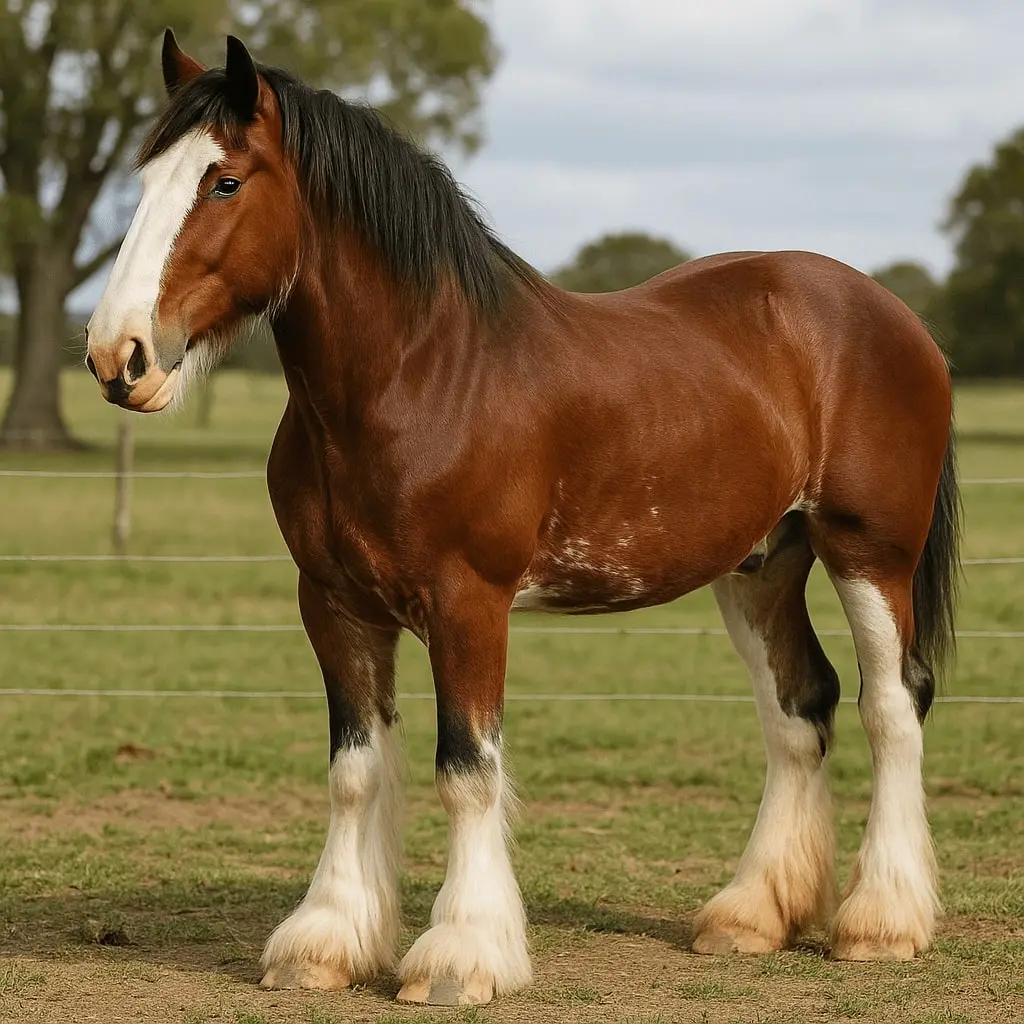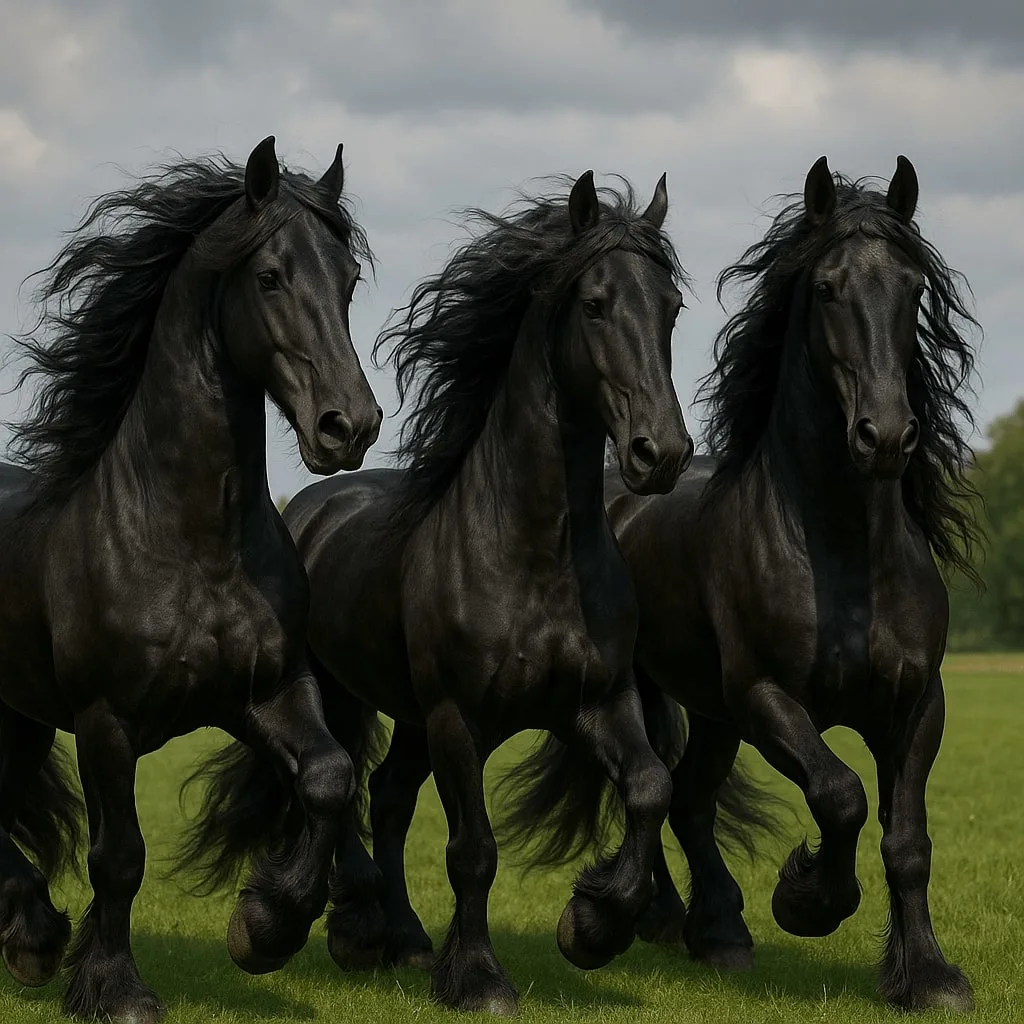This breed is a popular horse from the United States. It is known for its high head carriage and elegant style. In the past, these horses were used as cavalry mounts in wars. Today, they show a friendly attitude and calm manner.
Many people love them for their grace and spirit. For example, riders in other countries also value American Saddlebred horses and breed them today. At barns and shows, people often shorten the name to simply horse Saddlebred.
In this blog by I Heart Horses, you will learn some amazing American Saddlebred Fun Facts. Moreover, you will get to know some facts regarding its colors, characteristics, health, and much more. Hope this blog entertains you well!
American Saddlebred Fun Facts
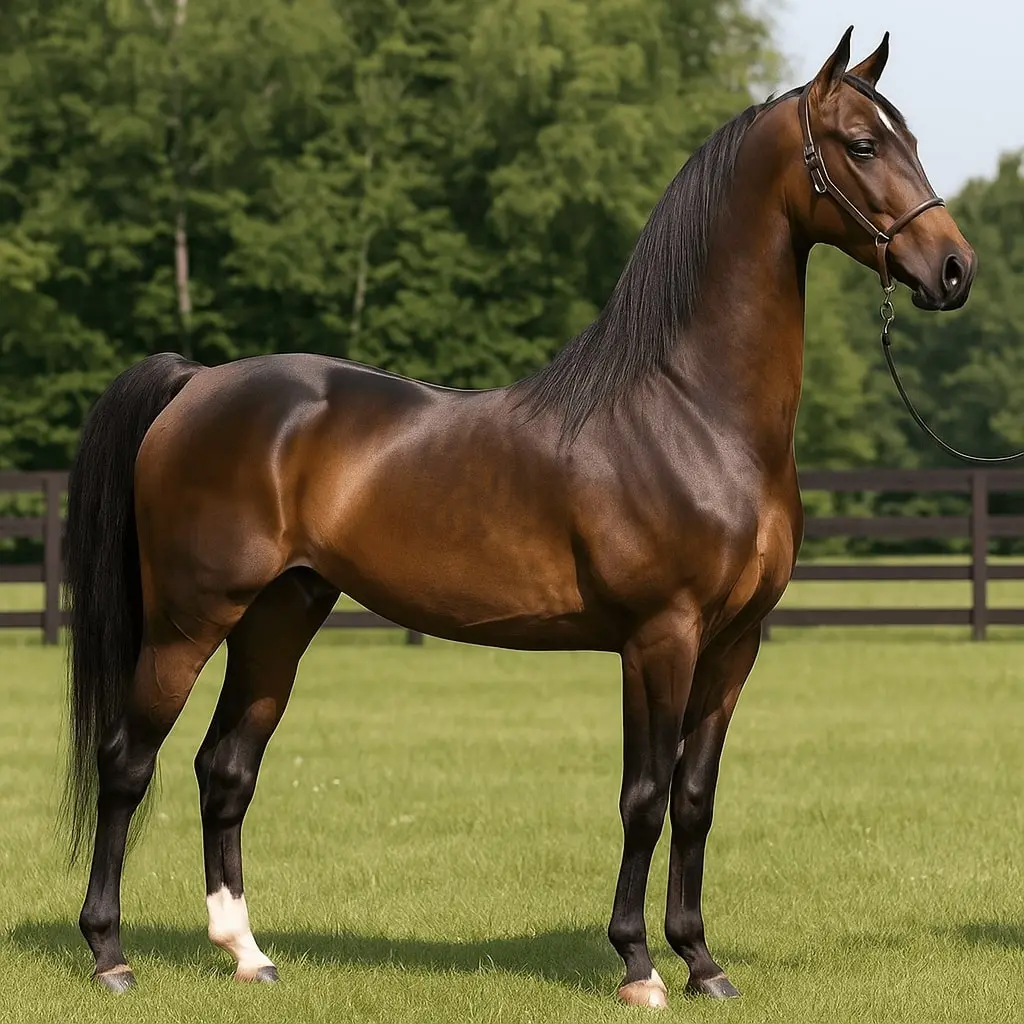
American Saddlebred fun facts are a fun way to learn about these horses. Many of these fun facts show why the breed is so special. Below is a list of American Saddlebred fun facts for kids and horse fans:
- These horses can have five gaits, including a smooth four-beat run called the rack.
- The breed often stands around 15 to 16 hands tall (about 60 to 64 inches).
- They were once nicknamed the “peacock of the horse world” for their flashy looks.
- Saddlebreds can be any color, but chestnut and bay are very common.
- Some Saddlebreds have a pinto pattern with big patches of white and another color.
- These horses were used in the American Civil War as officer mounts.
- In 1891, a registry was formed for the breed, making it one of the first American horse breeds to have a formal club.
- A famous Saddlebred named Rex McDonald was once sold for a huge sum because of his show records.
- They are called a gaited breed because some can perform four-beat ambling gaits in addition to walk, trot, and canter.
- Saddlebreds often compete in horse shows in classes like five-gaited and three-gaited.
- These horses have gentle personalities and can be good lesson and pleasure horses.
- They can also do English riding disciplines like dressage, eventing, and combined driving.
- Movie stars and celebrities have owned Saddlebreds, and these horses sometimes appear in films.
- Many American Saddlebreds are sold at auction each year because of their value and popularity.
- American Saddlebreds are often used as show mounts and lesson horses because of their good nature.
- American Saddlebreds often compete in events other than saddle seat shows, like combined driving.
- American Saddlebreds can also do western pleasure riding, although they are best known for saddle seat.
- Some American Saddlebreds still work as family riding horses on farms.
American Saddlebred Breed Facts
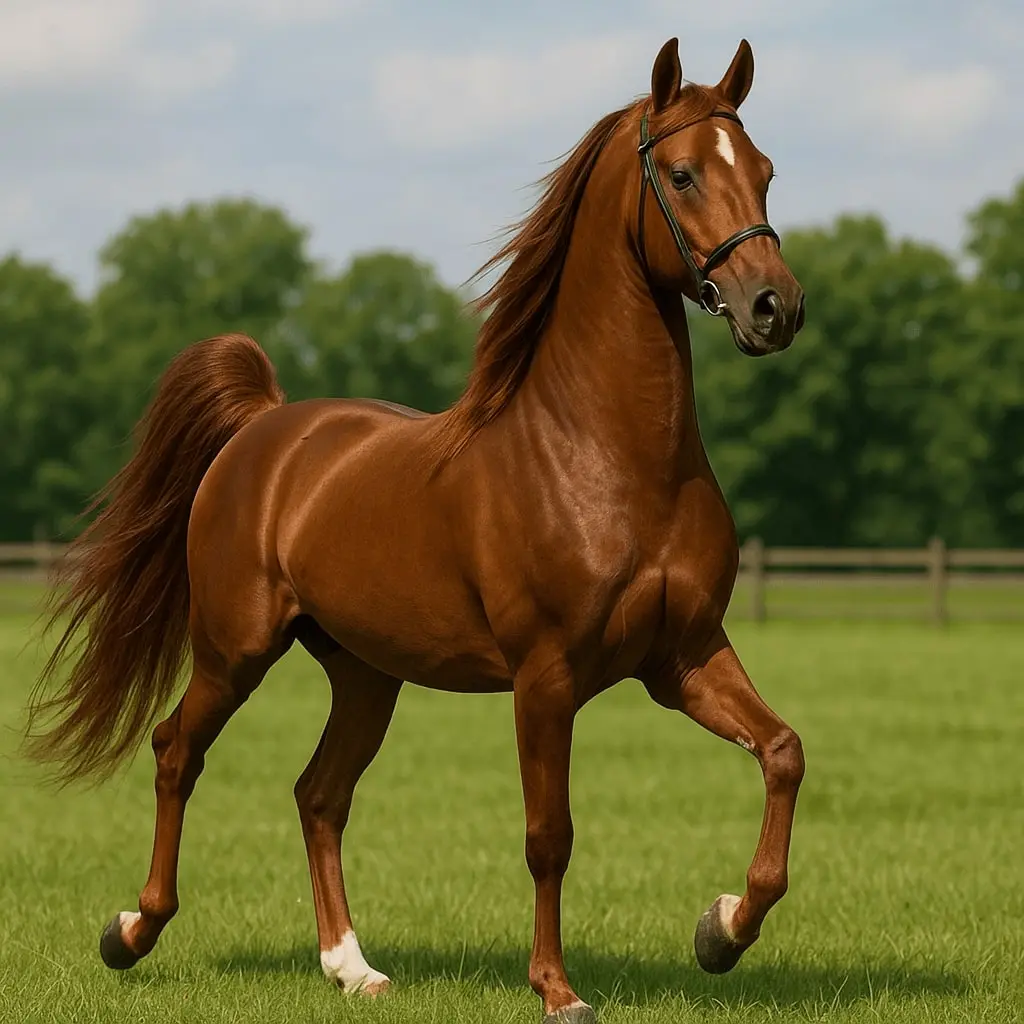
Here are some American Saddlebred facts for kids based on the breed’s colors, characteristics, health, and much more.
American Saddlebred Origin & History
The American Saddlebred origin dates back to early American history. The breed began in Kentucky around the time of the American Revolution. Breeders crossed Narragansett Pacers, Morgans, Thoroughbreds, and other horses.
The American Saddlebred history includes use as plantation horses and cavalry mounts. In fact, these horses were used by soldiers in the Civil War because they were fast and strong. The breed got its official registry in 1891 in Kentucky. Since then, they have been exported to many countries.
Clubs and breeders formed in places like Great Britain, Australia, and South Africa. Many foreign riding clubs teach Saddlebred riding too. For example, these horses helped start new breeding programs overseas.
Kentucky farms promoted the American Saddlebred through the years. They even called it the “Kentucky Saddler.” By the late 1800s, big horse shows featured Saddlebreds. Wealthy owners showed off their high-stepping horses in parades and fairs.
Early breeders gave popular names to their horses, and stories of these horses were told for generations. Some famous riders, like the entertainer Will Rogers, wrote about Saddlebreds in books and columns. Today, American Saddlebreds are still closely tied to their history. They remain a symbol of Kentucky’s horse traditions and American show horses.
American Saddlebred Characteristics
American Saddlebred characteristics make them stand out. They carry their heads high and have a proud look. These horses have long, arched necks and solid, well-muscled bodies.
They often show a high tail set and expressive eyes. For example, what makes a horse Saddlebred special is its proud, animated look and way of moving. People also describe Saddlebreds as intelligent and willing to please.
In the pasture, American Saddlebreds are curious and active. They learn quickly and enjoy attention from people. A common trait is their smooth gait. At a slow gait, each foot moves in a four-beat pattern that feels like riding on clouds.
At a rack, they move their legs very fast but smoothly, like gliding. Their strides are long and rhythmical. These movements make the horse look animated and elegant in the show ring.
American Saddlebred Colors
American Saddlebreds come in many colors. In fact, American Saddlebred colors can be any color accepted by the breed registry. Common colors include chestnut American Saddlebred and bay. There are also black, brown, gray, palomino, and even roan horses.
The breed even allows American Saddlebred pinto patterns. That means some Saddlebreds have big white spots on their coats. The first-known pinto Saddlebred was recorded in the late 1800s. These color patterns make each American Saddlebred unique.
For example, a chestnut horse may have a golden-red coat, while a bay has brown fur with black mane and tail. Even unusual palomino and gray coats are allowed. If a horse is pinto, it has a white base coat with brown or black patches. These bright colors help people tell each horse apart at shows.
American Saddlebred Height
The American Saddlebred height is usually about 15 to 16 hands high, which means around 60 to 64 inches at the withers. This tall build gives them a proud and graceful look in the show ring.
Their legs are strong and straight, and the croup (the top of the hindquarters) is level. The long, arched neck adds to their refined appearance. Many horse lovers admire this balanced and elegant frame.
American Saddlebred Weight
The American Saddlebred weight is normally between 1,000 and 1,200 pounds. Even with this weight, they look slim and athletic. Their muscular body makes them both powerful and light on their feet.
Saddlebreds carry themselves with spirit and alertness, but people also describe their nature as gentle. When groomed well, their silky mane and flowing tail complete the royal image of this breed.
American Saddlebred Price
The American Saddlebred price can change a lot depending on many things. A young or untrained Saddlebred may cost around $2,000 to $5,000. Horses that are trained for shows, riding, or breeding can cost much more. Some top show horses sell for tens of thousands of dollars. Their bloodline, age, and training all affect the price.
Care and upkeep also add to the cost of owning this breed. Saddlebreds need food, grooming, vet care, and proper housing. These costs can sometimes be more than the buying price over the years. Still, horse lovers say the beauty, energy, and charm of the American Saddlebred make the price worth it.
American Saddlebred Breed Types
Even though there is only one American Saddlebred breed, these horses are shown and trained in different types or classes. Each type shows a special side of the horse.
1. Three-Gaited Saddlebred
A Three-Gaited Saddlebred performs the walk, trot, and canter.
The horse is clipped to show its long neck and fine head.
It looks very elegant in the ring.
These horses move with high action at the trot.
The judges look for smoothness, style, and spirit.
2. Five-Gaited Saddlebred
- A Five-Gaited Saddlebred performs five gaits.
- These are walk, trot, canter, slow gait, and rack.
- The slow gait is smooth and slow.
- The rack is very fast but still smooth for the rider.
- These horses are called “gaited” because of the extra gaits.
- This type is very popular at big horse shows.
3. Fine Harness Saddlebred
- This type pulls a light cart.
- The horse wears a harness instead of a saddle.
- The Fine Harness Saddlebred trots with very high steps.
- It looks flashy and proud.
- People say this is one of the most beautiful classes.
- The horse does not carry a rider in this event.
4. Park Saddlebred
- Park Saddlebreds show the horse’s style and beauty.
- They move with high knees and animated steps.
- These horses show spirit but also control.
- They are judged on how much presence and energy they show.
- Park classes often wow the crowd with their power.
5. Pleasure Saddlebred
- This type is calmer and easier to ride.
- Pleasure Saddlebreds can be shown in English or Western style.
- They need to look comfortable and easygoing.
- The horse should look like a joy to ride.
- Families often enjoy this type for everyday riding.
American Saddlebred Uses
One of the most common American Saddlebred uses is in show competitions. These horses do well in saddle seat classes like five-gaited, three-gaited, fine harness, park, and pleasure. They are also seen in country pleasure and some western and hunter classes. In a show ring, a Saddlebred may trot or perform its five gaits high stepping. Judges look for energy, style, and smoothness.
Beyond the show ring, these horses can be trail or pleasure riding horses for families. Many riders enjoy them for their smooth movement. Saddlebreds are often trained as trail horses because they are easygoing on a walk and comfortable at other gaits.
In addition, these horses shine in combined driving competitions. Their elegance and stamina make the American Saddlebred sport horse useful in multiple disciplines. They even succeed in dressage, eventing, and endurance riding. This shows that Saddlebreds are not just “show horses” but true all-round athletes.
For example, some five-gaited Saddlebreds have been trained to jump low fences or compete in gymkhana speed games. A few have even tried musical freestyle routines!
Another popular use is for parade and exhibition. Spectators often cheer when a horse Saddlebred trots by, showing off its long tail and high knee action. The horse Saddlebred’s flashy steps and noble appearance make it a crowd favorite at parades or public events. They wear fancy bridles and may carry flags during parades.
Even police units sometimes use Saddlebreds in parks because they are calm in a crowd. Some Saddlebreds pull elegant carriages in weddings or historic reenactments. Their training and gentle nature make them good mounts for walking tours or carriage rides in cities.
In farms and ranches, Saddlebreds have been used to pull wagons or pack gear. Today they often just serve as fancy lesson horses or companions for senior riders.
American Saddlebred Lifespan and Health
The American Saddlebred lifespan is usually 25 to 30 years or more. They are generally healthy horses if cared for well. Good nutrition, regular hoof care, and vet checkups help them stay active. Owners feed them good hay or pasture grass and a balanced grain mix. These horses need moderate exercise each day because they are athletic.
Because they step high and often perform, Saddlebreds may face joint or hoof issues like any performance horse. Owners need to watch for hock and stifle strains, especially if the horse does the slow gait or rack.
They also check their hooves for cracks because Saddlebreds can wear their feet quickly at speed. With proper care, many of these horses live into their late twenties and sometimes beyond. Owners often give them regular dental work and vaccines too. When a Saddlebred slows down in old age, its owner may switch to relaxed pasture riding.
Many families say that even a twenty-five-year-old Saddlebred still loves being petted and groomed, showing the gentle nature of the breed.
American Saddlebred Intelligence:
American Saddlebred horses are smart and fast learners. They pick up tricks and training quickly. They are curious and like to explore new things. This makes them easy to handle and fun to work with. Their intelligence also helps them try lots of different activities.
These horses can remember people and places well. They adapt to new riders and new tasks very fast. Riders love their quick thinking and bright, friendly nature. Overall, American Saddlebred intelligence makes the breed shine by adding its name among the 20 most intelligent horse breeds.
Famous American Saddlebred Horses
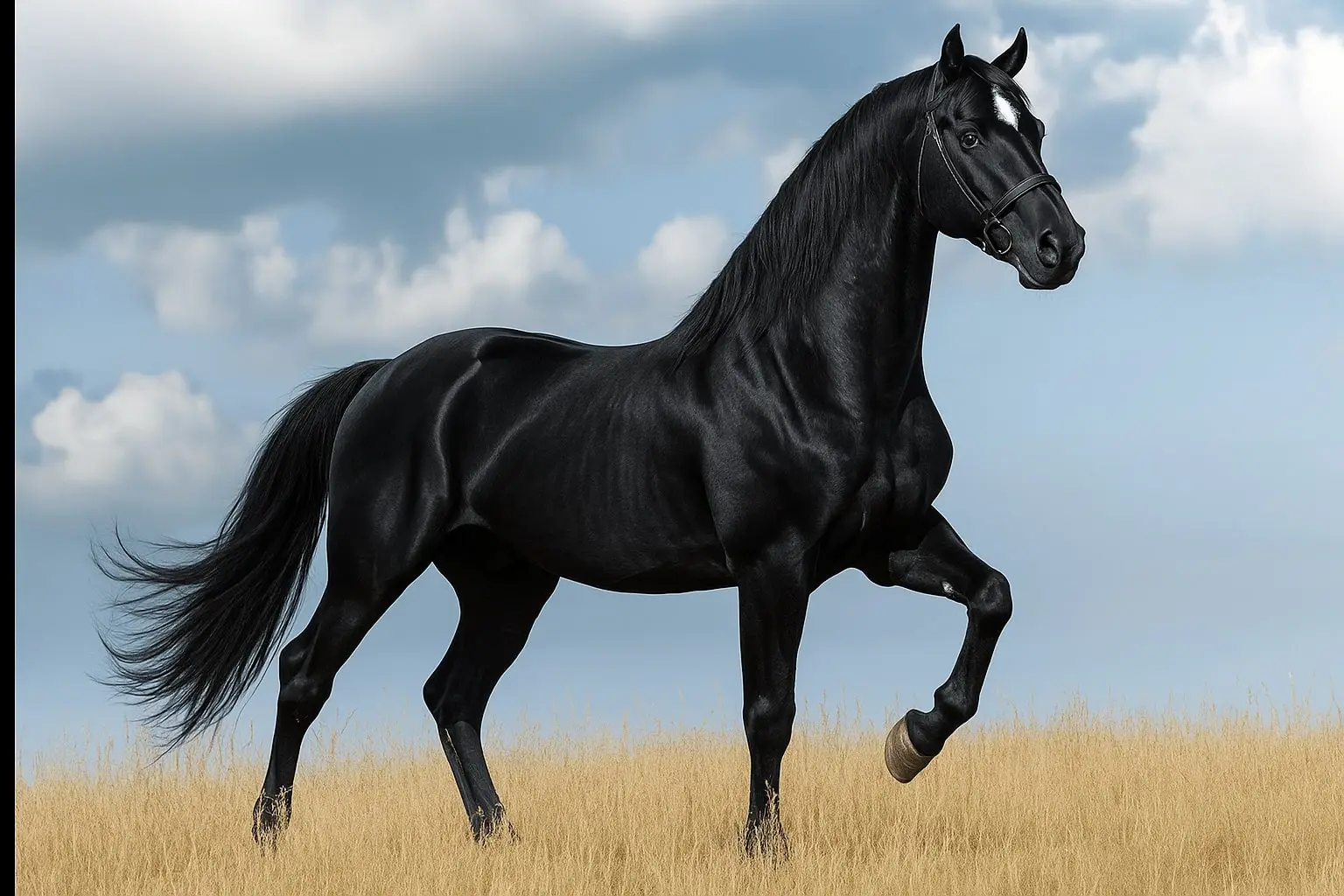
Some famous American Saddlebred horses have made a mark in history. For example, champion Saddlebred horses like Rex McDonald and Wing Commander are well-known in Saddlebred lore. Rex McDonald was a grand champion in the early 1900s and sold for a record price. Wing Commander won six Five-Gaited World Championships in the 1940s and 50s. These champions helped popularize the breed’s five-gaited style.
Other notable names include Anacacho Shamrock, a stallion from 1910 that sired many show horses, and Genie Bourbon King, a top performer in later years. Saddlebreds like these became legends in horse magazines and books. Even today, videos of their shows can be found online. Many long-time fans remember shows where these horses pranced around the arena with high steps and shining coats.
American Saddlebreds also appear in films and art. In old movies, horses in parade scenes were sometimes Saddlebreds, because of their dramatic look. Artists have painted Saddlebreds on canvas for their flowing manes and colorful coats. Some medal trophies have a Saddlebred silhouette as a nod to the breed’s history. One Saddlebred named Edna May’s King was famous for winning many shows in the 1950s. People still talk about his smooth rack and gentle nature.
What are some interesting facts about the American Saddlebred?
- They are called the “peacock of the show ring” because of their flashy style.
- They can be five-gaited and perform two extra smooth gaits, the slow gait and the rack.
- They are brave, kind, and athletic. Some can even do jumping and dressage.
- Over 291,000 Saddlebreds are registered in the U.S.
How fast can a Saddlebred horse run?
A Saddlebred horse can run about 30 to 35 miles per hour at full gallop.
What are the 5 gaits of a Saddlebred horse?
Saddlebreds have five gaits:
- Walk
- Trot
- Canter
- Slow gait (smooth and collected)
- Rack (fast and flashy)
Can American Saddlebreds jump?
Yes, they can jump. Some enjoy show jumping and eventing. Saddlebreds also do dressage and combined driving.
Why do Amish use Saddlebred horses?
The Amish like Saddlebreds because:
- They are strong and willing.
- They pull buggies well.
- They can trot long distances, sometimes 50 miles a day.
What do American Saddlebred horses eat?
They eat grass, hay, and feed concentrate. Some need special grain for energy if they show or compete. Horses usually eat 1–2% of their body weight per day in hay.
What are American Saddlebred horses used for?
They are very versatile. People use them for:
- Saddle-seat shows (five-gaited, fine harness, pleasure)
- Eventing, dressage, jumping, endurance riding, and combined driving.
- They also make good trail horses, parade horses, and family riding horses.
The Saddlebred has a rich past and many American Saddlebred fun facts to discover. You can find lots of American Saddlebred images online to see how beautiful they look. For example, if you search for horse Saddlebred online you will find many photos of this elegant breed. Breeders and fans admire this versatile horse that has become known as America’s ultimate show horse. The Saddlebred represents both tradition and excitement, and it embodies history, elegance, and friendly charm all in one breed.
There is always more to learn about the American Saddlebred horse. Visitors at horse farms and shows can often meet a Saddlebred and ask its owner about the breed. Young riders enjoy drawing pictures of Saddlebreds or writing stories with them. With their smooth gaits and bright coats, American Saddlebreds really capture people’s imagination.





